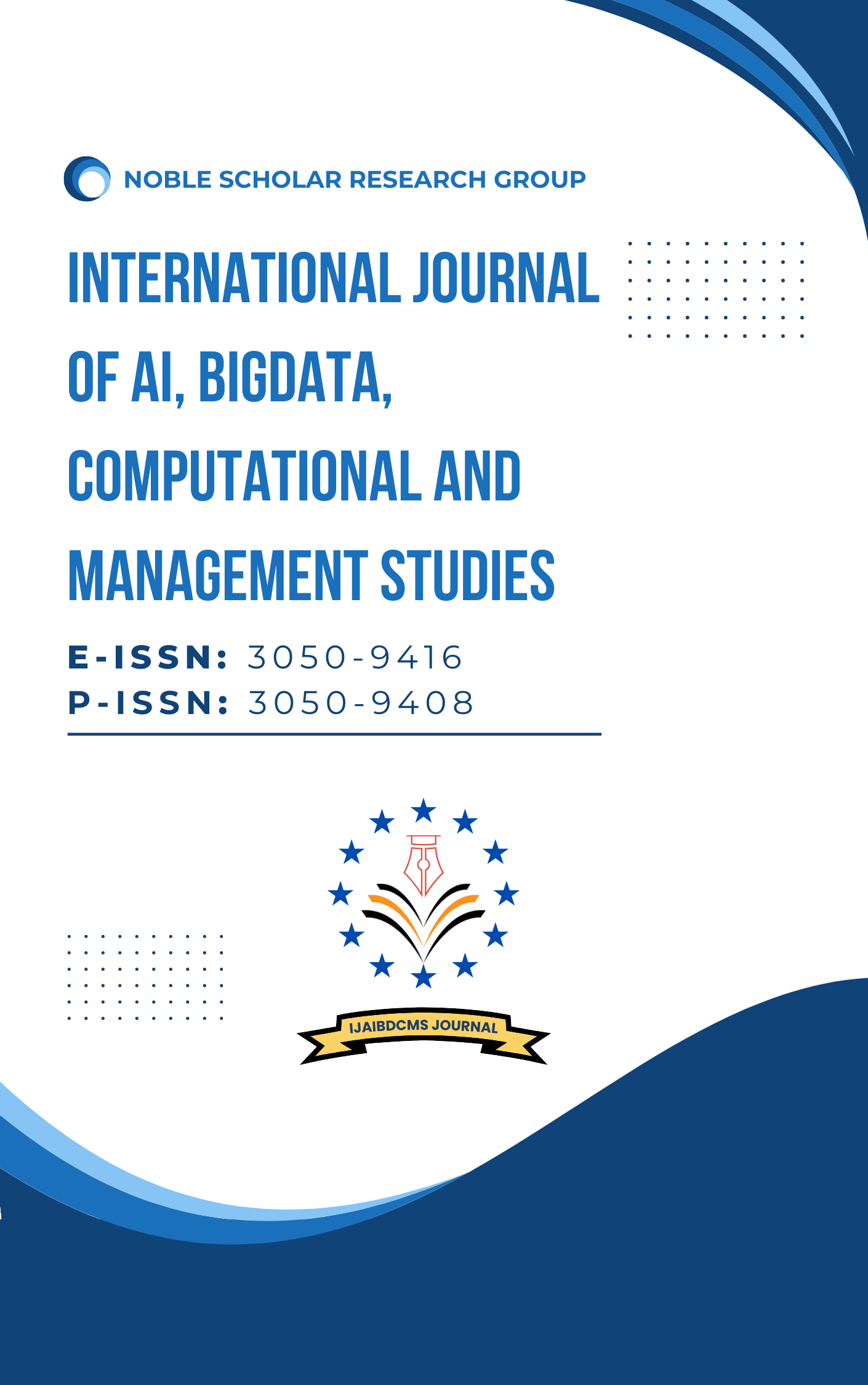What’s Next for Infrastructure? The Future of Code-Driven Healthcare
DOI:
https://doi.org/10.63282/3050-9416.IJAIBDCMS-V4I4P105Keywords:
Code-driven infrastructure, healthcare technology, cloud computing, DevOps, Kubernetes, patient care, data management, regulatory compliance, interoperability, artificial intelligence, machine learning, telehealth, remote monitoring, automation, data-driven decision-making, operational efficiency, healthcare innovationAbstract
The rapid evolution of healthcare technology has ushered in an era where infrastructure plays a pivotal role in transforming patient care and operational efficiency. As we reflect on the past decade, it’s clear that the shift towards code-driven healthcare has fundamentally altered the landscape. With the advent of cloud computing, artificial intelligence, and data analytics, healthcare providers have begun to harness the power of infrastructure-as-code, allowing for more agile, scalable, and secure systems. This transition streamlines processes and enhances collaboration among multidisciplinary teams, ultimately improving patient outcomes. Moreover, the increasing reliance on electronic health records (EHRs) and telemedicine has underscored the necessity for robust, interoperable infrastructure that can adapt to the demands of modern healthcare delivery. The rise of DevOps practices within healthcare organizations has fostered a culture of continuous improvement and innovation, breaking down silos that once hindered progress. As we look to the future, the challenge will be to navigate the complexities of regulatory compliance and cybersecurity while ensuring that technology serves the needs of both providers and patients. Integrating advanced analytics and machine learning algorithms into healthcare infrastructure promises to revolutionize predictive modelling and personalized medicine, enabling a shift from reactive to proactive care. In this context, understanding the future of infrastructure in healthcare is crucial; it requires a commitment to embracing new technologies while prioritizing ethical considerations and patient privacy. As we stand on the brink of this new frontier, the question remains: how can we leverage code-driven approaches to enhance operational efficiency and truly transform the healthcare experience for all?
References
1. Hildebrandt, M. (2020). Code-driven law: freezing the future and scaling the past. Is law computable, 67-84.
2. Tariq, N., Asim, M., Maamar, Z., Farooqi, M. Z., Faci, N., & Baker, T. (2019). A mobile code-driven trust mechanism for detecting internal attacks in sensor node-powered IoT. Journal of Parallel and Distributed Computing, 134, 198-206.
3. Anderson, J., Rainie, L., & Luchsinger, A. (2018). Artificial intelligence and the future of humans. Pew Research Center, 10(12).
4. Sullivan, J. L., Rivard, P. E., Shin, M. H., & Rosen, A. K. (2016). Applying the high reliability health care maturity model to assess hospital performance: a VA case study. The Joint Commission Journal on Quality and Patient Safety, 42(9), 389-AP12.
5. Thaduri, U. R. (2018). Business Insights of Artificial Intelligence and the Future of Humans. American Journal of Trade and Policy, 5(3), 143-150.
6. Goldsmith, S., Larsen, P., Smith, O., Wilson, M., Strzepek, K., Chinowsky, P., ... & Merill, C. (2007). How Much Might Climate Change Add to Future Costs for Public Infrastructure?.
7. Sheikh, S. (Ed.). (2020). Understanding the role of artificial intelligence and its future social impact. IGI Global.
8. Brady, D. (2021). The circulatory panopticon: Real names, rail infrastructure and Foucault's realist turn. Political Geography, 90, 102463.
9. Elusive, P. C. C. B. (2019). Time’s Up Healthcare Sets a Wake-Up Call. Caring for the Ages.
10. Vistro, D. M., Farooq, M. S., Rehman, A. U., & Riaz, M. D. (2021, December). A review on smart healthcare system using blockchain technology. In 2021 14th International Conference on Developments in eSystems Engineering (DeSE) (pp. 118-123). IEEE.
11. Hammergren, J., & Harkins, P. (2008). Skin in the Game: How Putting Yourself First Today Will Revolutionize Health Care Tomorrow. John Wiley & Sons.
12. Goldberg, D. T. (2021). Dread: Facing futureless futures. John Wiley & Sons.
13. Dodge, M., & Kitchin, R. (2009). Software, objects, and home space. Environment and Planning A, 41(6), 1344-1365.
14. Vitorino dos Santos Filho, J. (2009). CHROME: a model-driven component-based rule engine.
15. O’malley, J. P., O’Keeffe-Rosetti, M., Lowe, R. A., Angier, H., Gold, R., Marino, M., . & DeVoe, J. E. (2016). Health care utilization rates after Oregon’s 2008 Medicaid expansion: within-group and between-group differences over time among new, returning, and continuously insured enrollees. Medical care, 54(11), 984-991.



